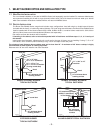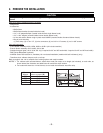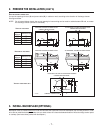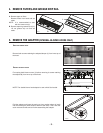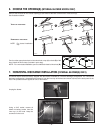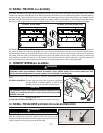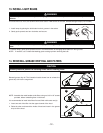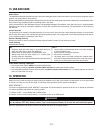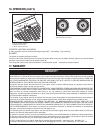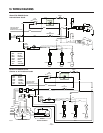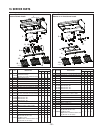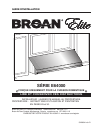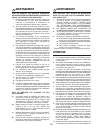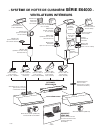
- 13 -
15. USE AND CARE
Baffle Filters
The baffle filters should be cleaned frequently. Use a warm detergent solution. Wash more often if your cooking style generates greater
grease—like frying foods or wok cooking.
Remove baffle filters by pushing them towards the back of hood and rotating filters downward. Baffle filters are dishwasher safe.
Allow filters to dry completely before reinstalling them in the hood.
Clean all-metal filters in the dishwasher using a non-phosphate detergent. Discoloration of the filter may occur if using phosphate
detergent or as a result of local water conditions—but this will not affect filter performance. This discoloration is not covered by
the warranty.
Grease Drip Rail
The grease drip rail should be cleaned frequently. Lift it out from the hood and use a warm detergent solution. As for the baffle
filters, wash more often if your cooking style generates greater grease—like frying foods or wok cooking. Allow grease drip rail
to dry completely before reinstalling it in the hood.
Blower Cleaning (Internal)
Remove the filters in order to access the blower. Vacuum blower to clean. Do not immerse in water.
Hood Cleaning
Stainless steel cleaning:
Avoid: When choosing a detergent
• Any cleaners that contain bleach will attack stainless steel.
• Any products containing: chloride, fluoride, iodide, bromide will deteriorate surfaces rapidly.
• Any combustible products used for cleaning such as acetone, alcohol, ether, benzol, etc., are highly explosive and should
never be used close to a range.
Do:
• Regularly wash with clean cloth or rag soaked with warm
water and mild soap or liquid dish detergent.
• Always clean in the direction of original polish lines.
• Always rinse well with clear water (2 or 3 times) after
cleaning. Wipe dry completely.
• You may also use a specialized household stainless steel
cleaner.
Don’t:
• Use any steel or stainless steel wool or any other scrapers
to remove stubborn dirt.
• Use any harsh or abrasive cleansers.
• Allow dirt to accumulate.
• Let plaster dust or any other construction residues reach
the hood. During construction/renovation, cover the hood to
make sure no dust sticks to stainless steel surface.
16. OPERATION
HEAT SENTRY™
This hood is equipped with a HEAT SENTRY™ thermostat. This thermostat is a device that will turn on or speed up the blower
if it senses excessive heat above the cooking surface.
1) If blower is OFF - it turns blower ON to HIGH speed.
2) If blower is ON at a lower speed setting – it turns the blower up to HIGH speed.
When the temperature level drops to normal, the blower will return to its original setting.
WARNING
The HEAT SENTRY™ can start the blower even if the hood is turned OFF. In this case, it is impossible to
turn the blower OFF with blower switch. If you must stop the blower, do it from the main electrical panel.
!
Always turn your hood on before you begin cooking to establish an air flow in the kitchen. Let the blower run for a few minutes
to clear the air after you turn off the range. This will help keep the whole kitchen cleaner and brighter.



